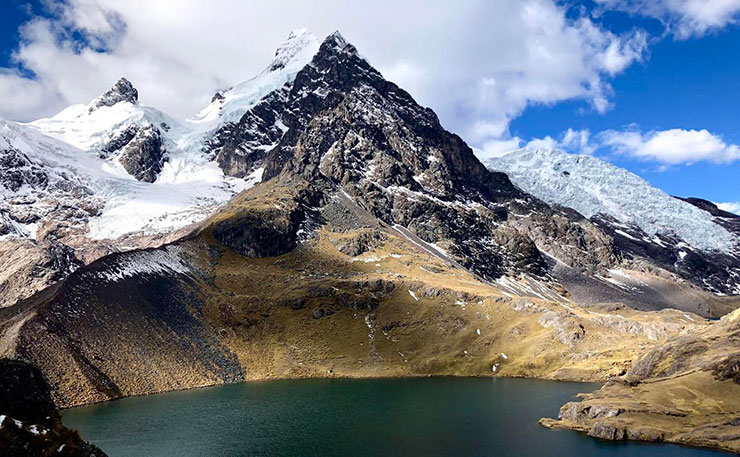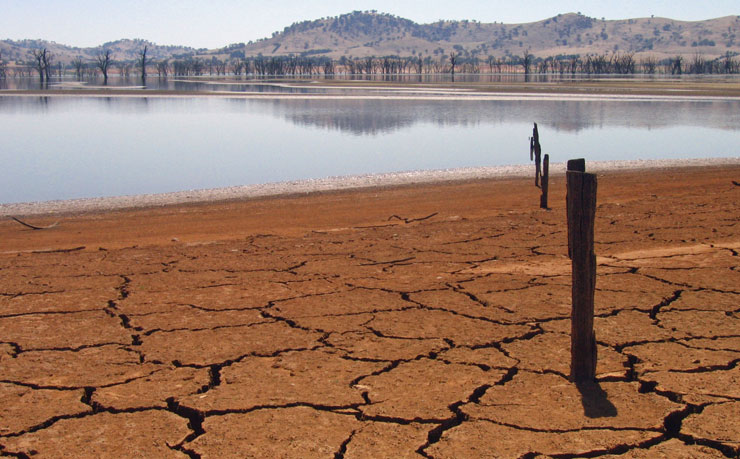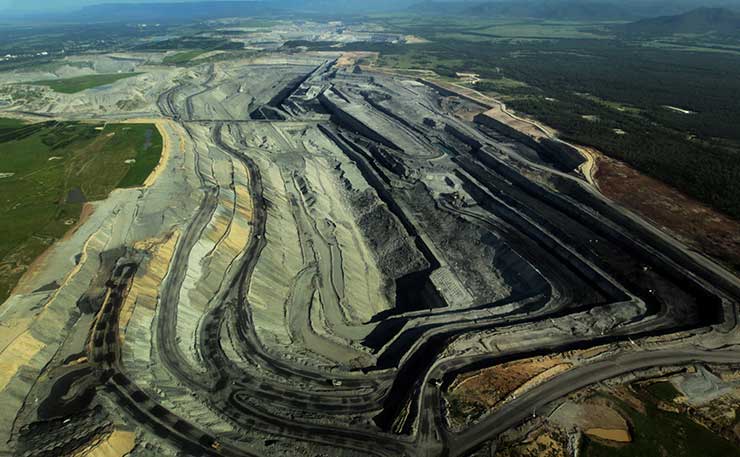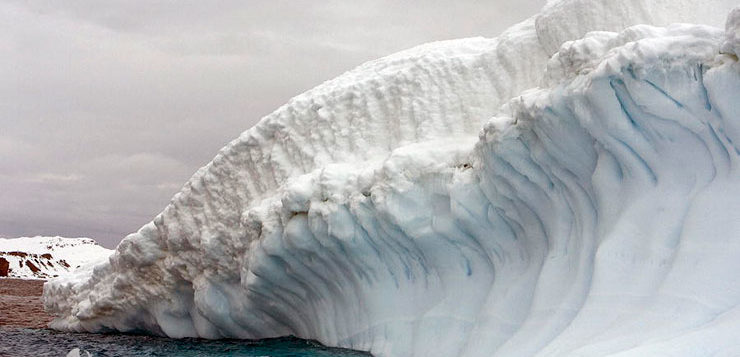The science is settled, the debate is over. Now we need to figure out what to do as individuals, and what to do as a collective with the leaders who refuse to do their jobs to combat climate change, writes Dr Richard Hil.
“An effective response to climate change requires collective action by all countries and sectors.”
– Australian Government, Department of Foreign Affairs and Trade.
“Australia… remains one of the most carbon-intensive OECD countries and one of the few where greenhouse gas emissions (excluding land use change and forestry) have risen in the past decade.”
– OECD, January 2019.
Is it just me, or have you noticed how conversations have changed over recent weeks/months? The climate emergency seems to have crept into every discursive nook and cranny. There’s talk of floods, fires, droughts and associated calamities, and of the prospects for survival as the climate emergency goes through what one commentator refers to as an “escalation crisis”, meaning that the pace and scale of change is far in excess of what the climate models are telling us. The upshot is that we simply don’t know where all this is heading. It’s a wicked problem, on steroids – a problem over which we (apparently) have less and less control.
Not surprisingly, there’s panic in the air. The world’s leading scientists – including the 15,000 from 184 countries who signed an open letter in 2017 – have exhausted themselves in pleading to governments and corporations to take the necessary action to avoid “runaway climate change”. In many instances such pleas have been either ignored, dismissed or entangled in webs of sectional interests and realpolitik obfuscation.
The growing sense of concern among scientists, however, has not gone unnoticed among my friends and acquaintances. When the “climate thing” comes up, I’ve seen perfectly well-adjusted people start chewing their nails, fidgeting, staring into the distance, and more than occasionally, quietly weeping. We shouldn’t be too surprised by such reactions – or what psychologists refer to as “ecoanxiety” – as there is growing evidence that the threat posed by the climate emergency is generating severe mental health problems – anxiety, depression and suicide ideation, to name a few.
The fact is that people are becoming more and more attuned to what is happening around them. My own mind is swirling with terrifying predictions about the extinction of all life on earth in a few decades, or, as some are predicting, in 12 years or less. Its hair rising stuff.
And as if all that isn’t enough, we still have to put up with so-called “denialists”-cum-conspiracy-merchants who peddle spade loads of aberrant nonsense that merely deplete one’s energies. I don’t bother with them, frankly – the people or theories. Why would I? It’s like arguing over whether the world is flat or if smoking leads to lung cancer. It’s a waste of time. There’s no ‘debate’.
Common global experiences
Most days I chat with my older brother, Henryk, who lives in Lima, Peru. We talk about this and that – Brexit, the state of the Peruvian economy, Donald Trump’s latest buffoonery, and whether our prostates are in good shape. But since the middle of last year all that has changed. Now we both wrestle with the climate emergency, its consequences, the tragedy of it all. This is what he said during our last Skype chat:
“Does anyone [in Peru]care that we have the highest temperatures ever recorded in parts of Lima, or that there’s flooding in the north and south east of Peru? Roads have been blocked and bridges downed, communities are often cut off. Farm land is being destroyed in many parts of the country. Power consumption is at record highs to keep household temperatures down, with electrical goods in high demand. The snow is melting in the Andes, a source of drinking water for the capital. This is all the result of climate change. It’s an unfolding tragedy. I have been in a permanent sweat for 15 days. This is very unusual, uncomfortable and it’s difficult to sleep at night.”
A quick browse through the Internet confirms what Henryk is saying. In 2017, heavy rainfall (10 times more than the average) fell in the northern Piura region of Peru, leading to the deaths of 67 people, mainly as a result of mud slides, with thousands more having to evacuate their homes. In total, over 100,000 homes were damaged and more than 100 bridges destroyed, bringing chaos to that part of the country.
Floods and droughts have had severe impacts on farmlands across Peru, impacting its food supply. To make matters worse, the Ausangate glacier in the Andes is melting, threatening water supplies to Lima’s 10 million people. Many other extreme climate effects have been noted, not least unprecedented snow falls in parts of the Andes, forcing the government to declare a state of emergency. As in Australia, records are tumbling, year on year. The projections for both countries are similarly depressing.

On some of our better days Henryk and I hope things aren’t as bad as we think, although we’re not silly enough to put our faith in geo-engineering which, as Naomi Klein has wryly observed, is using pollution to neutralise pollution. On other days, Henryk and I get so depressed that we take to packing our existential bags. In short, we veer from naïve optimism to bone-jarring panic, seething anger and everything in-between.
But somehow, we always end up with the “so what can we do to stop this before it’s too late” question. Yesterday we both agreed that given the severity of the crisis – my brother keeps an eye of the doomsday clock which is set at two minutes to midnight – all of global civil society should take radical action.
Radical action
Ok, so what does that look like? We echo various activist suggestions, like mobilising people to surround our parliaments with human chains, mass protests outside the homes of fossil fuel CEOs, heckling at shareholder meetings, chaining ourselves to mining equipment at extraction sites, stopping coal trains, and so forth. We both laud the actions of activists who have prevented CSG mining in NSW, or the open-cut mine in Gloucester, NSW, and those brave souls in Peru who have been killed or criminalised for seeking to protect the environment. We know that the rich and powerful are worried by all this, that’s why they’ve introduced draconian anti-protest laws across the globe, including in my own state of NSW.
Henryk and I also talk about changing the language we use in order to sheet home blame for the crisis to where it belongs: governments, lobbyists, corporate heads, mainstream media etc. Phrases like “policy violence”, “climate disaster”, “climate criminals” and “climate genocide” have crept into our vocabulary.
Like many others, we also think that citizens tribunals should be created to prosecute the guilty parties – or at least to identify who they are (as happened in the wake of the invasion of Iraq) – and that the criminal and environmental courts should do the same. We’ve ruled out violence as a tactic but we’re all for civil disobedience of the Extinction Rebellion and 350.org variety, if only to raise public awareness about the scale of the impending catastrophe.
All these actions and more are urgently needed to tackle the climate violence being perpetrated against us, even though it might be too little, too late. The window is shutting, and fast.
These are unprecedented times, much worse than the nuclear crisis because, even with the egregious policy of Mutually Assured Destruction, human agency could still intervene to draw us back from the brink. But if the runaway climate emergency takes hold then no-one knows what will happen and no amount of geo-inventiveness will pull us back from the abyss.

I often laugh at this prospect, in the same mad way that occurs when all hope is lost. At other times, I’m virtually catatonic, especially when reading those doom-laden reports. My brother and I also rant at the self-censorship of the corporate media, the marginalisation of voices calling for radical action – independent journalists, climate scientists, environmental activists – and the way the plutocratic elites have turned the climate emergency into an infotainment sideshow or a business opportunity.
The deceit and vacillation of governments across the globe when it comes to emissions reduction is nothing less than scandalous: an act of wilful violence perpetrated against us all.
Our choices
We have choices about how to respond to all this. My worry is that too many people are opting to carry on regardless (because life is demanding, or the story of finality is too much, or because we want to shelter our nearest and dearest). Others have retreated into fatalism (the party’s over, time to hunker down in gated communities, survivalist enclaves and nirvana-like hamlets), and yet others are talking of armed resistance when strangers come looking for food and water.
But there are other ways of responding which we see, for instance, in litigation cases through the courts, mass protests, actively shutting down mines, divestment, and so on. The current reality demands that these and other actions intensify, and that the coalitions and networks that make up the global environmental movement name the guilty parties and compel them, through organised civic action, to take the necessary decisions to prevent climate catastrophe.
Ultimately of course, what this means is system change and a radically different way of thinking about democracy and our relationship with the planet. Conference resolutions, non-binding targets, trading schemes and the rest will not be enough in the short term to prevent the slide to catastrophe – after all, carbon emissions are at record levels as I write.
That should tell us all we need to know about what the abuse of power looks like.
Cooking the books?
What about Australia’s commitment, or lack thereof, to reducing carbon emissions? A recent OECD report, Environmental Performance Review of Australia, suggests that our actions are ruinous when it comes to greenhouse gases (GHGs).
In a press release, the OECD notes that: “The country will fall short of its 2030 emissions target without a major effort to move to a low-carbon model…. Australia needs to develop a long-term strategy that integrates energy and climate policies to support progress towards its commitment to reduce greenhouse emissions.”
Reflecting on the review in The Conversation, Alan Pears, senior industry fellow, RMIT, concludes that the government’s current targets, “fall far short of what is really necessary and responsible”, a conclusion backed by the Climate Council and respected researchers like Anna Skarbek, CEO at Climate Works Australia, Monash University.

The OECD review notes Australia’s’ continued heavy reliance of fossil fuels far exceeds those of other wealthy countries: “[Australia is] reliant on coal for two-thirds of its electricity [and]has one of the highest levels of non-renewable energy use of advanced economies, with fossil fuel consumption still benefitting from government support. Coal, oil and gas make up 93% of the overall energy mix compared to an OECD average of 80%. The share of renewables in electricity generation has risen to 16% but remains below the OECD average of 25%. Australia’s power sector – the country’s top emitting sector – is not subject to emission reduction constraints.”
As one of the worlds’ leading per capita GHG emitting nations and coal exporters, Australia stands out as a pariah state. But, like other countries, it is paying the price. As the review notes: “Australia has warmed by 0.9ºC over the past 60 years, with the warmest years occurring since 2005. Both rainfall and drought are likely to grow more extreme, and bushfire smoke and dust will increasingly affect air quality. The oceans around Australia are warming, rising, and are expected to become more acidic, exacerbating pressures on the Great Barrier Reef. Better water management is needed to respond to the changing climate and prevent further toxic algae blooms forming and killing fish in the drought-hit Darling River”.
The review outlines a range of recommendations to lesson GHG emissions and the destruction (among the worst on the planet) of biodiversity and ecological systems.
Despite such tragedies, the current Coalition government remains committed to coal as part of its “energy mix” into the foreseeable future, and new mines are in the offing in various parts of the country. It may not be official policy, but Australia is, in effect, committed to worsening the globe’s biosphere, thereby inflicting spectacular violence on all species.
Coal of course is only one, albeit hugely significant, contributor to GHGs. It is estimated by the World Health Organisation that globally, about 7.5 million people die avoidably (prematurely) each year due to the effects carbon burning pollutants (carbon monoxide, nitrogen oxides, and fine carbon particulates that lodge in the lungs) and 500,000 perish as a result of extreme weather events caused by anthropogenic climate change. Yet, as Melbourne-based scientist, Dr Gideon Polya, observes, “This latter estimate of presently about 0.5 million climate change-related deaths may be an under-estimate because UN Population Division data indicate that presently 15 million people die avoidably (prematurely) each year (half of them children) due to poverty and deprivation in the Developing World (minus China), with these impoverished, tropical or sub-tropical countries already being severely impacted by global warming.”
Australia’s contribution to this unfolding tragedy is manifestly evident. It’s up to the global environmental justice movement to ratchet up the struggle for survival.
Donate To New Matilda
New Matilda is a small, independent media outlet. We survive through reader contributions, and never losing a lawsuit. If you got something from this article, giving something back helps us to continue speaking truth to power. Every little bit counts.




